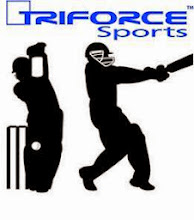What is 'The Map'?
Everyone has a set of processes they follow prior to playing a game.
- Many players go through these processes in a very erratic manner. These players often find it difficult to produce consistently solid performances on game days.
- The good players identify the processes they go through and attempt to follow them in a deliberate way each time they prepare for a game.
- The very good players identify what works for them within these processes and apply themselves to working through these processes throughout the week leading up to and including game day.
I would suggest all cricketers draw up their own map to cricketing success. The higher the level of cricket you play or aspire to play, the more detailed your map should be.
Over the course of the next few weeks I will deal specifically with various specific elements that make up a Players Map. I hope you will work through this process with me and develop your own map as you go. Please remember these maps once developed will be living documents that you constantly modify as your game develops.
The Basics
- Practice Routines
- Non Practice Training Routines
- Organization of Diet
- Game Eve Routines
- Game Day Routines
- Recovery Routines
- Game Evaluation and Planning Routine
Practice Routines
All players, regardless of age, should learn a comprehensive warm-up routine. This should include dynamic as well as static stretches. As with all these elements, by turning these activities into a routine they can be learned and remembered more easily. They can also be completed rapidly, making your efforts more efficient and less time-consuming.
After the warm up, some mental rehearsal should take place before any cricket-specific physical activities. For younger players, this might take the form of a reminder from the coach about what specific batting, bowling and fielding skills they should be working at during the session. For older players, each individual should remind themselves what technical aspects of their game they want to focus on that day.
Following this mental rehearsal, players should move into physical skill work. For young players this should wherever possible involve some individual batting, bowling and fielding skills as well as some group activities that put the skills under scrutiny in a game situation.
As players mature and individual skill sets develop, each player will need to undertake diverse activities aimed at addressing weaknesses as well as further developing strengths. Net batting and bowling are only two of a number of activities that might be undertaken at a practice session.
Remember when you are part of a team, you must factor in other players practice needs. As your awareness of the needs of your team mates increases (this should happen with age), you can plan activities that satisfy the needs of a number of players. So you will need to develop a 'pre-training' routine to make sure you get to work at your game as well as helping your team mates and developing team spirit.
One activity common to most team practice sessions is net training. Young players should be reminded what they are trying to do when batting in the nets on a particular day. Should they focus on defence when batting or maybe hitting the loose ball? Should they be trying to bowl some variations or work at their stock ball?
Older players should develop a routine to employ when called upon to pad up for a batting net that will get them to the net with clear objectives and an uncluttered mind. This will vary from player to player.
Similarly, each bowler must develop an individualized routine that focuses their efforts on specific objectives when bowling in the nets.
More experienced players should develop 'mini-routines' that they work through between deliveries. These sets of thoughts and actions will be similar but not identical to the mini-routines players employ between deliveries on game day. (Game day routines must obviously have a strategic element while net practice routines may have a more technical focus.)
Once all the physical activities have been completed, a warm down routine should be performed. Again, this should be easily learned so that the player can perform their stretches while reflecting on how many of their training objectives they achieved during the current session and what objectives they will try and achieve next session. For younger players, the coach can provide this input by summarizing 'What we did today?' and 'What we are going to try and do next practice session?'. This provides some continuity from one practice session to the next.
So if like Damien Fleming and me, you think “You gotta have a plan!”, get a note book and start plotting your own course towards consistent cricketing success.
After all, how can you possible reach the desired destination without a map?


No comments:
Post a Comment